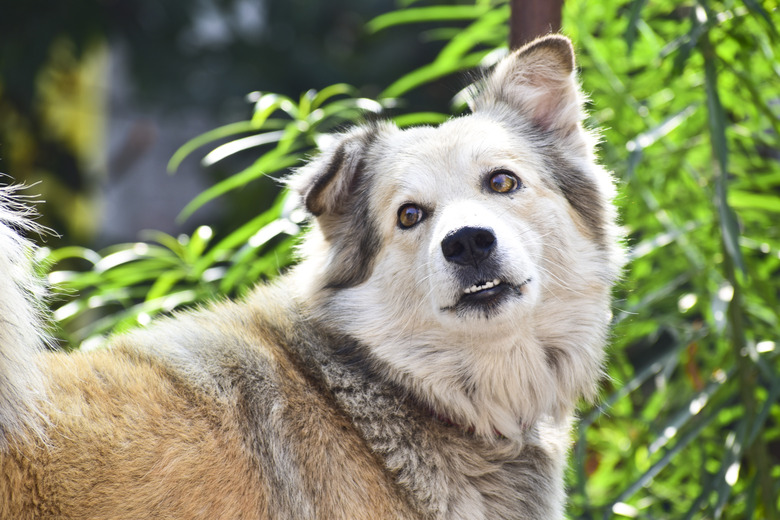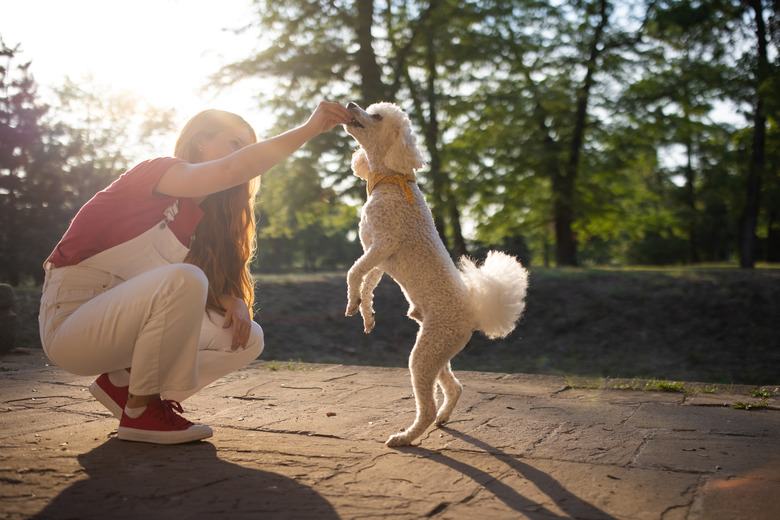Mast Cell Tumors In Dogs: Symptoms, Treatment, And Prognosis
Cutaneous mast cell tumors (MCTs) account for approximately 20% of all canine skin tumors. Symptoms of mast cell tumors in dogs are fairly straightforward, as you can usually see or feel these growths on your pet. If a mast cell tumor is caught early and treated appropriately, surgery can be curative. However, if the tumor has metastasized or spread, the prognosis isn't good. If you notice any growths on your dog, take them to the veterinarian as soon as possible.
What is a mast cell tumor?
What is a mast cell tumor?
Mast cell tumors are the most common skin cancer in dogs. Mast cells are a type of white blood cell found in dogs' connective tissue near the skin surface. They are the cells involved with releasing histamine during an allergic reaction. Mast cell tumors are generally single growths, although they can appear in multiple masses. If a tumor is well differentiated — that is, has cells that resemble normal cells — a dog might lose hair in the tumor site, but the growth rarely bleeds. Slow-growing, these tumors usually reach between 1 and 4 centimeters in size.
If a tumor is undifferentiated, or has cells that don't resemble normal tissue, it might grow very fast and ulcerate, causing the animal obvious pain, irritation, and itching. The area around it might redden and contain fluid.
Symptoms of mast cell tumors in dogs
Symptoms of mast cell tumors in dogs
Most canine mast cell tumors occur on the trunk or in the area between the anus and genitals. In females, that's between the vulva and anus; in males, it's between the scrotum and anus. Other locations where mast cell tumors might develop are the legs and paws and the neck and head. Mast cell tumors can take on any appearance and can even look like benign, fatty tumors called lipomas. Sometimes, MCTs will also fluctuate in size, getting bigger and then smaller and then bigger again.
Rarely, mast cell tumors develop internally where you won't be able to see them. Tumors growing in the anal/genital region, nail bed, mouth, or muzzle tend to have the worst prognosis. Other symptoms of mast cell tumors include vomiting, appetite loss, and black tarry stools. These symptoms occur due to histamine release causing increased stomach acid.
Dog breeds at risk for mast cell tumors
Dog breeds at risk for mast cell tumors
While any dog might develop a mast cell tumor, certain breeds are more likely to do so. These include:
- Beagles
- Boxers
- Boston terriers
- Bull mastiffs
- English bulldogs
- Cocker spaniels
- English setters
- Golden retrievers
- Shar-Peis
- Pugs
- Schnauzers
- Labrador retrievers
Is a mast cell tumor in a dog always cancer?
Is a mast cell tumor in a dog always cancer?
Yes, mast cell tumors are always cancerous in dogs. (In cats, they are often benign.) However, low-grade tumors are less likely to spread. There are three grades of MCTs. The grading system is written as Grade I (also written as Grade i), which are less likely to metastasize; Grade II (Grade ii); and Grade III (Grade iii), which are high-grade tumors. High-grade MCTs are likely to spread to other parts of the body.
Dogs with low-grade tumors can potentially be cured. Dogs with high-grade tumors have a median survival time of four to six months. High-grade tumors are more likely to recur compared to low-grade tumors.
Mast cell tumors in dogs: diagnosis and treatment
Mast cell tumors in dogs: diagnosis and treatment
Your veterinarian will initially do cytology via a fine needle aspirate (FNA) to identify the type of cells in the growth under the microscope. This is a simple procedure using a needle and syringe to remove cells from the tumor. Though FNAs aren't always diagnostic with all types of tumors in general, they are usually diagnostic for mast cell tumors.
After finding mast cells, your veterinarian will either perform a biopsy or proceed with surgical excision of the tumor. The tumor will go to a lab for histopathology, which confirms the presence of cancer cells and determines the stage of the disease. If the tumor was excised, then histopathology also determines if the surgical margins are clean, meaning all of the tumor was removed. Surgical removal of the tumor is almost always indicated, along with removal of any affected regional lymph nodes.
This type of cancer requires that a large amount of surrounding tissue be removed to reduce the chance of recurrence. So, don't be surprised if the incision is much larger than the tumor itself. If the tumor is extensive or in a difficult location, it's possible you may be referred to a veterinary oncology specialist.
In order to provide additional prognostic information, your dog will also need an abdominal ultrasound and radiographs (X-rays) to determine if there has been metastasis to other parts of the body. In some cases, a bone marrow aspirate may also be performed.
Your veterinarian may also recommend doing a PCR test to determine if your dog's MCT has any genetic mutations called c-Kit. This test can help provide more prognostic information on metastasis and the potential for responding to certain chemotherapy drugs.
Your dog might also undergo chemotherapy with drugs such as prednisone, vinblastine, or Palladia (toceranib). Radiation therapy with a veterinary oncologist may also be needed. Your dog's prognosis and treatment options depend on the tumor's grade and level of invasion. Additional treatment involves the antihistamine Benadryl and famotidine or cimetidine (a proton pump inhibitor) to help with any gastrointestinal ulcers.
The bottom line
The bottom line
Pet parents who find a new lump on their dog should have it examined by a veterinarian. Mast cell tumors can look like benign, subcutaneous fatty lipomas or other seemingly innocent types of growths on a dog's skin, so all new growths should have a fine needle aspirate test. If caught in the early stage, surgical excision of canine mast cell tumors can be curative. For higher-grade tumors with metastatic disease, however, quality of life, side effects of treatment, and survival time need to be taken into consideration.



